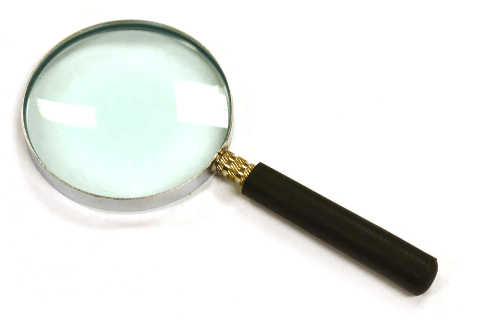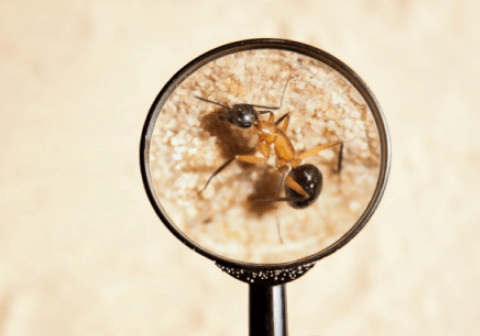What is a magnifying glass?
A magnifying glass, a handheld lens in the laboratory, is a convex lens used to create magnified images of objects. The lens is usually mounted on a frame with a handle. You can use a magnifying glass to focus the light.
For example, solar radiation can be concentrated to create a focal hotspot for starting a fire. Magnifying glasses can be used in a variety of ways in everyday life.
What does the Magnifier tool do?
The Magnifier tool changes the zoom level of the working image. Click on the image to zoom in on the entire picture. However, you can also create a zoom rectangle by clicking and dragging the mouse pointer.
Magnifying glasses make objects appear larger because their convex lenses (convex means curved outward) refract or bend light rays to converge or combine them. Essentially, magnifying glasses trick your eyes into seeing things differently than they are.

When light reflects off an object and reaches the eye, the rays travel parallel to each other. As they pass through a magnifying glass, the convex lens bends parallel light rays to converge and create a virtual image on the eye’s retina.
Due to geometric principles, virtual images on the retina appear more prominent than natural objects. Even with a magnifying glass, our eyes trace rays in parallel lines across the virtual image. The virtual image is farther from the eye than the object, so the object appears larger!
Sheet magnifiers comprise several narrow concentric ring lenses, so the combination acts like a single lens but is much thinner. This arrangement is known as a Fresnel lens.
Types of magnifying glass
- A portable magnifying glass with light
- LED Magnifier
- Wide viewing angle reading magnifier
- Scientific and medical tools
A magnifying glass can be mounted on a stand to form a microscope, which scientists, such as chemists and biologists, use to conduct research. Microscopes are also used in medical research and medical laboratories to examine blood, other body fluids, and tissues.
Microscopes can magnify objects thousands of times, allowing us to see organisms and different material elements that are invisible to the naked eye. Some microscopes are equipped with cameras that record these magnified images.
What is a Magnifying Glass Used for?
Magnifying glasses are often used to help people with vision problems. Glasses are a form of reading glasses that correct various issues, from myopia and farsightedness to astigmatism.

People with eye problems due to macular degeneration, glaucoma, or diabetes often use handheld magnifiers to read books, newspapers, and other documents with small print.
Magnifiers mounted on reading devices that can magnify print to 3 to 10 times their average size are also helpful for people with eye diseases such as rod and cone deficiency or retinitis pigmentosa.
Uses of Magnifying Glasses
1. Read book
Use the magnifying glass to make your words jump off the page. To make your text stand out, choose one that is illuminated. Bright LEDs enhance contrast so you can finish your report or read the last chapter late into the night without straining your eyes.
2. Home and Hobby Supplies
Many use magnifying glasses for hobbies, crafts, and other daily activities at home. A hands-free magnifying glass attached to a stand is helpful for needlepoint work and other sewing and knitting projects.
A magnifying glass is also beneficial for reading details on maps and fine print in legal documents. Coin collectors use magnifying glasses to detect wear on coins, which helps determine their value. Stamp collectors use magnifying glasses to check the condition and authenticity of stamps.
3. Find rare stamps
Stamps are small designs with beautiful graphics and vibrant, bright colors, usually in stamp-sized sizes. Sometimes, they are also precious. You can also enjoy and find more treasures by examining them under a magnifying glass.
4. Electronics Repair
Holding your breath while trying to get something out using tweezers or a screwdriver can be daunting. This can be made more accessible by placing it under a light and lens. Use the most powerful magnifying glass to mark parts and replace reference numbers.
5. Finding Map
When you start looking at maps, getting inspired and ideas for places to go is hard. A giant magnifying glass provides a broader field of view and brings to life place names that would otherwise go unnoticed. Check them out for clarity and add them to your travel itinerary.
6. Watch what you eat
Manufacturers have been under pressure for some time to reduce packaging, but that means too much text – too much information – too much to read. If you’re counting calories or have allergies, a magnifying glass can be as helpful as your shopping list at the supermarket.
7. Fix small things
Perhaps you’ve seen a restoration program on TV and been inspired to fix something. Unfortunately, the last time you saw that thing was 30 years ago, and time has not been so kind to your eyesight. Do not worry. A magnifying lamp illuminates your subject and reveals the details you need.
8. Relive your memories
Professional photographers have always used high-powered magnifiers to check their slides, negatives, and prints. Although digital has taken over these days, many of us at home still have albums full of old photos. It’s a pleasure to look at them and remember the ‘good old days’ through a magnifying glass.
9. Investigations
From medical schools to science labs, police forensics departments, and hospitals, you’ll probably find a magnifying glass or two to help you with your investigations.
10. Find important documents
You won’t be able to come in without the proper documents. Both passports and driver’s licenses are accepted. Pass it under your desk magnifying glass for inspection.
11. Helps you with your projects
Model builders spend hours going through intricate details, from blueprints to components. Putting everything together under a magnifying glass is one of the most satisfying moments of anyone’s passion.
